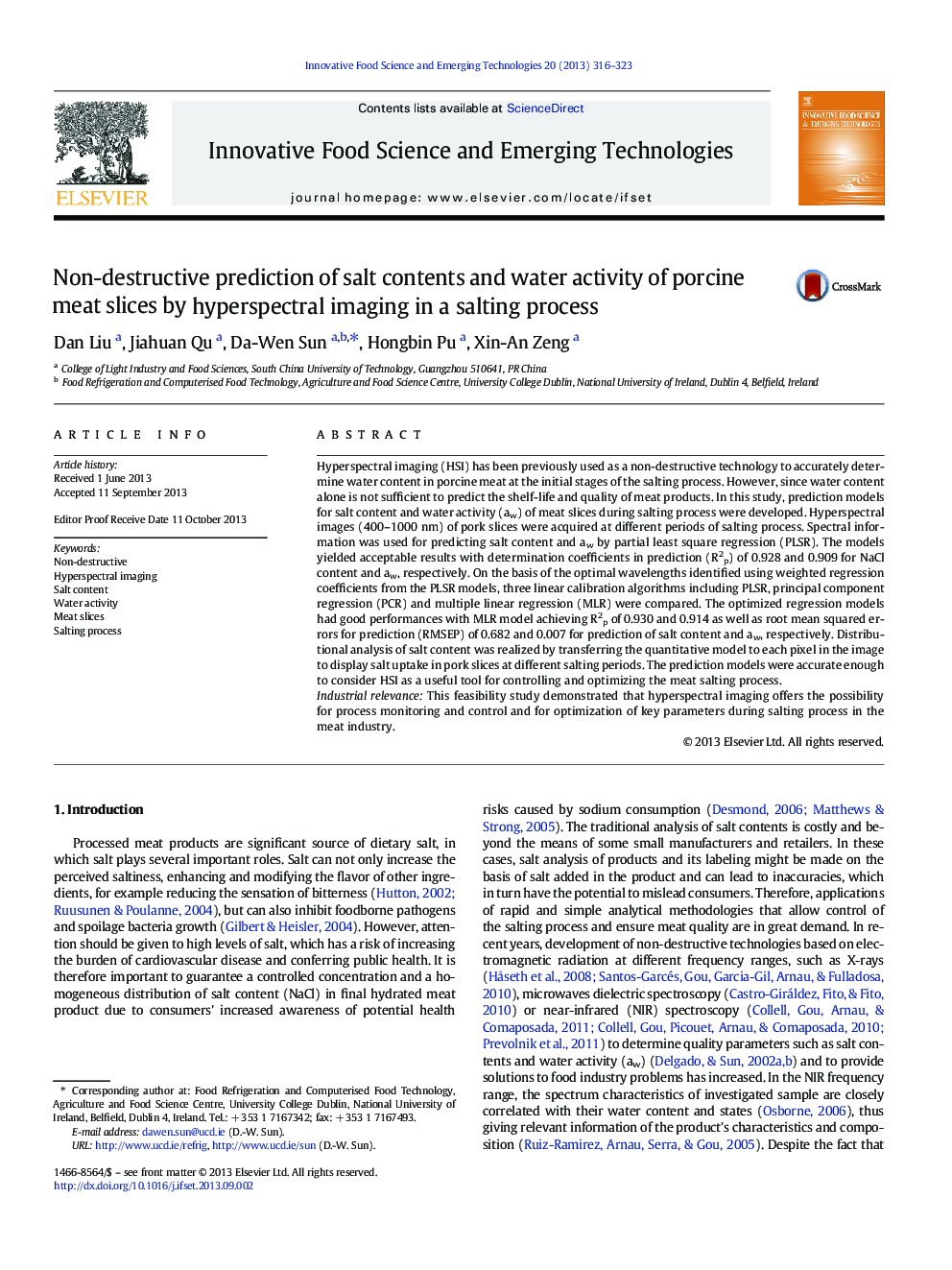| کد مقاله | کد نشریه | سال انتشار | مقاله انگلیسی | نسخه تمام متن |
|---|---|---|---|---|
| 2086605 | 1545546 | 2013 | 8 صفحه PDF | دانلود رایگان |

• First time hyperspectral imaging was used to monitor meat salting process.
• Salt contents and water activity of porcine meat were predicted with good accuracy.
• Optimal wavelengths were selected to develop multispectral imaging system.
• Predictive abilities of PLSR, PCR and MLR models were compared.
• Image processing algorithm was developed to obtain salt distribution maps.
Hyperspectral imaging (HSI) has been previously used as a non-destructive technology to accurately determine water content in porcine meat at the initial stages of the salting process. However, since water content alone is not sufficient to predict the shelf-life and quality of meat products. In this study, prediction models for salt content and water activity (aw) of meat slices during salting process were developed. Hyperspectral images (400–1000 nm) of pork slices were acquired at different periods of salting process. Spectral information was used for predicting salt content and aw by partial least square regression (PLSR). The models yielded acceptable results with determination coefficients in prediction (R2p) of 0.928 and 0.909 for NaCl content and aw, respectively. On the basis of the optimal wavelengths identified using weighted regression coefficients from the PLSR models, three linear calibration algorithms including PLSR, principal component regression (PCR) and multiple linear regression (MLR) were compared. The optimized regression models had good performances with MLR model achieving R2p of 0.930 and 0.914 as well as root mean squared errors for prediction (RMSEP) of 0.682 and 0.007 for prediction of salt content and aw, respectively. Distributional analysis of salt content was realized by transferring the quantitative model to each pixel in the image to display salt uptake in pork slices at different salting periods. The prediction models were accurate enough to consider HSI as a useful tool for controlling and optimizing the meat salting process.Industrial relevanceThis feasibility study demonstrated that hyperspectral imaging offers the possibility for process monitoring and control and for optimization of key parameters during salting process in the meat industry.
Journal: Innovative Food Science & Emerging Technologies - Volume 20, October 2013, Pages 316–323